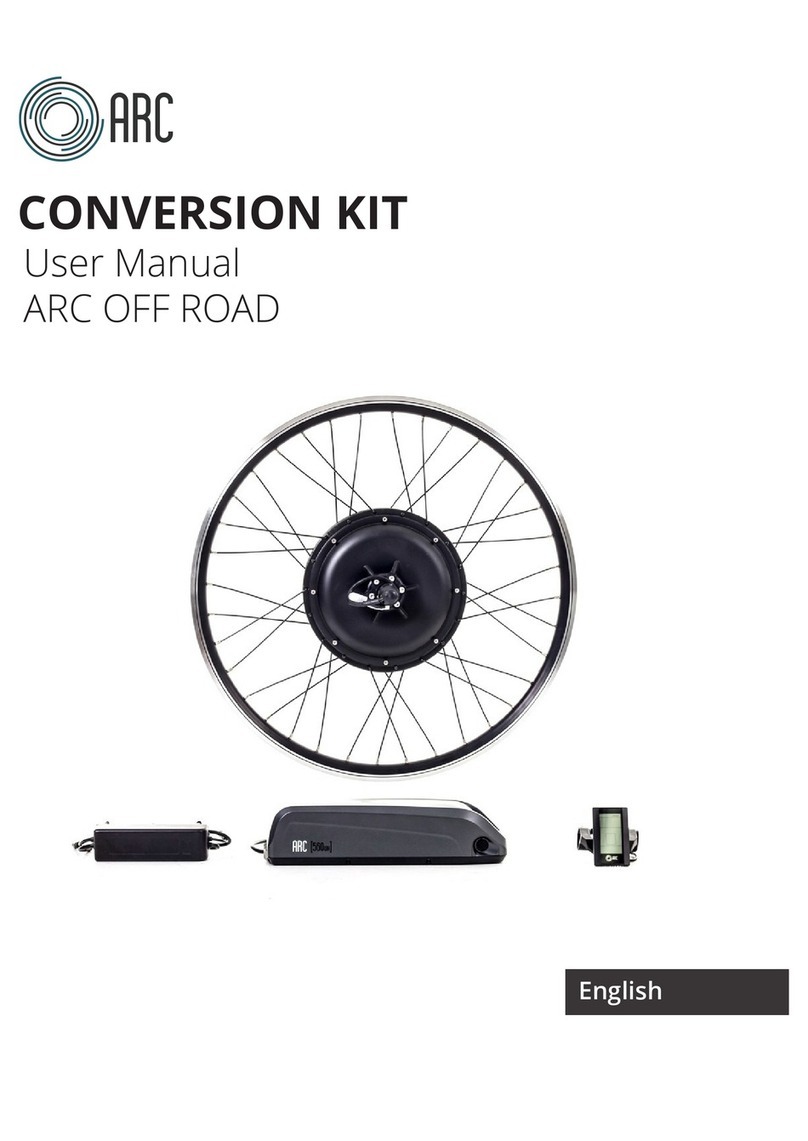USER MANUAL ARC
LAST UPDATED: 3/08/2018 5
A) Electric Motor
The muscle. This component applies rotaonal force to the wheels and propels
the bicycle forward. Motors can either be hub drive (in the wheel) or mid drive.
B) Motor Controller
The brain. This complex piece of electronics takes input from other components
and operates the motor. The motor controller is generally built into the frame
of the electric bicycle, but can be found aached to the motor or outer frame.
C) Baery
The heart. Without this component there will be no speedy take o or smooth
runs over hills. The baery of an electric bike is generally a Lithium Ion type
(though some are sll lead acid). They have baery management systems that
ensure the safe operaon and charging of the baery.
D) Handlebar Display
The ears and eyes. This component takes in input from the rider and
communicates it to the motor controller,. It can also use that informaon to
restrict the motor controller’s operaon. This device usually allows the rider to
change pedal assistance levels and check baery levels.
E) Throle (Oponal)
This device is controlled by the rider and is typically located on the handlebar.
When the rider uses the throle, it will propel the bike forward.
F) Pedal Assistance Sensor and Magnet Ring
Another input to the motor controller. This component detects the rotaon of
the pedals and alerts the motor controller. The motor controller then acvates
power to the motor based on the seng requested on the handlebar display.
G) Electric Brake Cut-os (E-brake cut-os)
Typically aached to the brakes or built in to the brakes, this component
detects the actuaon of the brakes and cuts power to the motor. This is an
added safety feature built into most electric bikes that use pedal assistance.




























